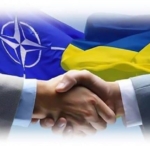Russian aggression and full-scale invasion turned millions of Ukrainians into refugees, forcing them to seek asylum in friendly nations of the European Union. After the Russian incursion into Ukraine in February 2022, the EU for the first time in its history activated the so-called Temporary Protection Directive to receive refugees from Ukraine. The TPD offered those fleeing war immediate temporary protected status in the EU and a harmonized package of rights in the areas of accomodation, education, healthcare, and employment. Since war-start, about 16 million Ukrainians have arrived in the European Union, of which 11 million have already returned to Ukraine, while some moved on to other countries. Since the EU crisis mechanism was activated a year ago, more than 3.8 million refugees from Ukraine have received temporary protection in the European Union. This option, valid until March 2024, may be extended for another year, until 2025.
Millions of Ukrainians, who were forced to become refugees as a result of Russian aggression, have become both a certain issue and an advantage for Europe at the same time. Undoubtedly, the largest wave of refugees to Europe since World War 2 has built more pressure on the EU financial system and created burden on the education and health care systems of individual member states that welcomed Ukrainians in such hard times. This is quite understandable because most of the refugees are women and children. At the same time, as per analysts, the effect of the mass flows of Ukrainians to Europe has positive consequences, too. According to the estimates released by the Organization for Economic Cooperation and Development, the additional contribution to the annual GDP growth rates of the Czech Republic, Poland, and Estonia stood at 1.2%, while in Hungary, Latvia, and Romania it was almost 0.8%. According to the Center for Migration Studies at the University of Warsaw, Ukrainians employed in Poland paid at least $2.4 billion in taxes, which even exceeded the amount of aid provided by the government. It is in Poland that the share of employment is highest as over a half of those who received temporary shelter also got a job there. Despite the fact that 66% of Ukrainians who found themselves abroad have a higher education, they work in fields with a lower pay, in particular in logistics, industry, agriculture, and construction. And this once again confirms the opinion that Ukrainians are not afraid of difficulties. They don’t wish to remain a burden for European countries, and in fact they have become solid part of the European workforce. They actively integrate into the European labor market and pay taxes. Analysts note that Ukrainians adapt to the EU labor markets faster than refugees from previous waves, which is not surprising, given the high level of education and qualifications, as well as the granting of temporary protection status to all Ukrainians by the EU, which allows them to seek employment immediately. Also, this is about the readiness of Ukrainians to go lengths to find a job.
About 1.1 million forced migrants from Ukraine were able to get employed across the European Union. That’s according to the Vice President of the European Commission, Margaritis Sinas, who spoke at a press conference in Brussels dedicated to the anniversary of the TPD implementation. Temporary protection status provides direct, unconditional, and immediate access to the labor market, unlike the traditional status of asylum seekers.
According to statistics, in late 2022, some 3.8–4.7 million Ukrainians have fled Ukraine due to war. The largest number of refugees moved to Poland, Germany, the Czech Republic, and Italy. It is clear that a large part of them lost a most of their income after Russia unleashed its war. In the European Union, all Ukrainians are entitled to receive the temporary protection status, and yet, although this gives them the right to residence, work, education and healthcare in all EU countries, the living conditions of Ukrainians across EU countries vary significantly. For example, Germany provides substantial social benefits, while in Poland, such benefits are either low or nonexistent. According to official data, more than 150,000 Ukrainians came to Italy, fleeing Russian aggression. Not a lot, compared to the over a million that Poland took in and the almost a million that Germany hosted. At the outset of the full-scale invasion, Italy quickly adopted a number of refugee support programs: the former government, led by Draghi, allocated EUR 318 million to help Ukrainians. Refugees could either reside with family or friends and receive EUR 300 per adult and EUR 150 per child for three months, or live in facilities provided by the state and receive food but no money. In practice, the majority of those who fled the war settled with friends, and this, according to some data, is up to 90% of the total number. So an absolute minority of Ukrainians in Italy live in facilities provided by the state.
More than 60% of those who arrived applied for cash assistance, but not all received it due to delays and lack of funds. Many Ukrainian families have already returned to Ukraine, not expecting to receive the stipulated aid tranches. The rest of the Ukrainians adapted to living conditions by finding part-time jobs on the Italian labor market, which has enough offers for low-skilled and low paid jobs, including house cleaning and caretaking. It is difficult to find another job, despite the fact that there are various job search programs available, designed for Ukrainian refugees – by both the European Union, regional authorities, and businesses. Various courses are offered, including to master Italian language, but hardly any of them massively helped Ukrainians get a job.
It is clear that Ukrainian refugees are an additional burden for Italy’s economy, which is already not in its best shape. At the same time, Meloni’s statements and her consistent pro-Ukrainian foreign policy suggest further actions and steps by her government. And here the prime minister has excellent opportunities to demonstrate her concrete support to Ukraine by continuing to provide the necessary assistance, supply weapons, as well as extend social programs for Ukrainian refugees who remain in Italy. So let Italy remain in memory of the people who were forced to flee from the horrors of war am open, warm, and hospitable country as it truly is.





